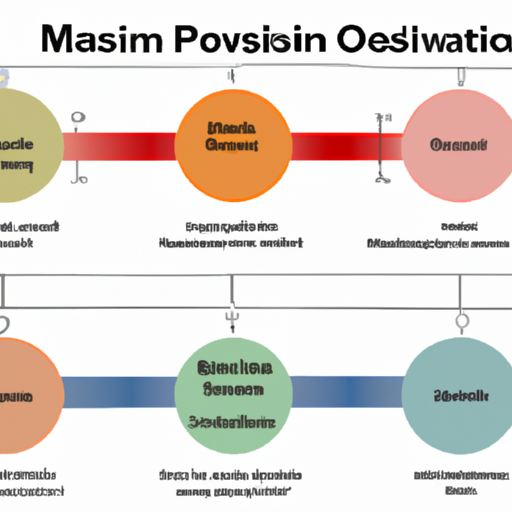This blog post explores the critical subject of blast mitigation for government facilities, discussing the importance, techniques, materials, and strategies employed in the field. It underscores the necessity for such measures in protecting critical infrastructures, human lives, and maintaining the continuity of government operations amid threats.
Understanding the Importance of Blast Mitigation: Why Should We Care?
The threat of explosive attacks on government facilities is a harsh reality that cannot be ignored. Such attacks not only pose a risk to the safety and security of government employees and visitors but also have the potential to cause widespread destruction and loss of life. In today's world, where security threats are ever-evolving and unpredictable, it is crucial for government facilities to prioritize blast mitigation measures. By investing in effective blast mitigation strategies, we can minimize the impact of explosions, reduce casualties, and safeguard critical infrastructure. Ignoring the importance of blast mitigation is not an option in ensuring the resilience and security of government facilities in the face of potential threats.
Blast mitigation is not just about protecting buildings; it is about safeguarding lives and preserving the continuity of essential government operations. The financial cost of repairing and rebuilding damaged infrastructure pales in comparison to the human cost of lives lost and injuries sustained during a blast. Moreover, the psychological impact of a blast on survivors and the wider community can be long-lasting and profound. By prioritizing blast mitigation, government facilities demonstrate a commitment to the safety and well-being of their personnel and the public they serve.
In addition to the human and financial costs, the reputational damage resulting from a blast at a government facility can be significant. A successful attack not only undermines public trust in the government's ability to protect its citizens but also emboldens adversaries to escalate their hostile actions. By investing in blast mitigation measures, government facilities signal their preparedness and deterrence capabilities, sending a clear message that security is a top priority. Proactive measures in blast mitigation not only enhance physical security but also bolster public confidence in the government's ability to respond effectively to security threats.

An illustration demonstrating the impact of a blast on a non-mitigated vs mitigated facility
What Does It Take? The Materials and Techniques in Blast Mitigation
Blast mitigation requires a comprehensive approach that combines specialized materials and cutting-edge techniques to effectively protect government facilities against explosive threats. One of the key elements in blast mitigation is the use of blast-resistant materials, such as reinforced concrete, laminated glass, and steel structures designed to withstand the impact of an explosion. These materials are specifically engineered to absorb and dissipate blast energy, minimizing damage and reducing the risk of structural failure. Additionally, advanced technologies, such as blast-resistant coatings and films, can be applied to existing structures to enhance their blast resistance without the need for extensive reconstruction.
Moreover, the strategic placement of blast mitigation features, such as blast walls, bollards, and landscaping elements, can further enhance the protective capabilities of government facilities. These physical barriers serve as deterrents and deflectors, redirecting blast forces away from vulnerable areas and reducing the potential impact of an explosion. Additionally, the incorporation of blast-resistant design principles, such as progressive collapse prevention and energy dissipation mechanisms, can significantly improve the overall resilience of a building in the event of a blast.
"The Best Defense is a Good Offense": Preemptive Measures in Blast Mitigation
Preemptive measures play a crucial role in enhancing the effectiveness of blast mitigation strategies for government facilities. By taking proactive steps to identify and address potential vulnerabilities before an attack occurs, security professionals can significantly reduce the impact of explosions and protect lives and critical infrastructure. Preemptive measures encompass a range of strategies aimed at fortifying government facilities against blast threats through advanced planning, risk assessment, and threat intelligence.
- 1. Comprehensive Risk Assessment:
Conducting a thorough risk assessment is the cornerstone of preemptive blast mitigation. By analyzing the unique characteristics of a facility, including its location, design, and function, security experts can identify potential weak points that may be susceptible to blast damage. This assessment involves evaluating various factors, such as the proximity to high-risk areas, the presence of critical infrastructure, and the likelihood of a targeted attack. By gaining a comprehensive understanding of the facility's vulnerabilities, security professionals can develop tailored mitigation plans to address specific threats effectively. - 2. Security Training and Awareness:
Empowering personnel with the necessary knowledge and skills to respond to blast threats is another critical preemptive measure in blast mitigation. Security training programs should educate employees on how to recognize suspicious behavior, report potential threats, and evacuate safely in the event of an explosion. Additionally, raising awareness about the importance of vigilance and adherence to security protocols can enhance the overall security posture of government facilities and contribute to a culture of preparedness and resilience.

An infographic on the phases of proactive blast mitigation
Bridging the Gap: How Can We Improve Current Blast Mitigation Strategies?
In order to enhance the effectiveness of current blast mitigation strategies for government facilities, it is imperative to bridge the gap between existing measures and evolving threats. One key aspect of improving blast mitigation is the continuous evaluation and updating of security protocols and technologies to stay ahead of sophisticated threats. Embracing a proactive approach that integrates intelligence gathering, risk assessment, and technological innovation can bolster the resilience of government facilities against evolving blast threats. Collaboration with industry experts, security professionals, and government agencies is essential in identifying emerging trends and implementing best practices in blast mitigation strategies. By fostering a culture of continuous improvement and knowledge sharing, government facilities can adapt to changing security landscapes and enhance their preparedness for potential threats.
Investing in research and development to explore cutting-edge technologies and materials is another avenue for improving blast mitigation strategies. Advanced solutions such as blast-resistant building materials, intrusion detection systems, and blast-resistant barriers can provide an additional layer of protection against explosive threats. By leveraging the latest advancements in security technology, government facilities can fortify their defenses and mitigate the impact of blasts more effectively. Additionally, regular training and drills that simulate real-life scenarios can help validate the effectiveness of mitigation measures and ensure that personnel are well-prepared to respond to emergencies. By incorporating feedback from drills and exercises, security teams can refine their strategies and address any gaps in their preparedness, ultimately strengthening the overall security posture of government facilities.
In conclusion, blast mitigation for government facilities is a non-negotiable aspect of national security. The continuous advancements in this field ensure that government facilities remain resilient against blasts, safeguarding lives and essential operations. However, it is a shared responsibility that requires the collective effort of the government, the building industry, and the general public.







